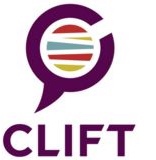Take a look at this video for a demonstration of the depth of results you can get.
Some say it is difficult to get consumers to give authentic and deep testimony in a traditional qualitative research interview or focus group.
Not if you design your research correctly!
People want to be able to share themselves but certain things need to happen first – sometimes a level of trust needs to be built, and sometimes people simply need time to think and reflect, and a structure to convey the information in a way that feels clear and safe.
Some things to keep in mind when depth is needed:
- Schedule enough time for people to get comfortable. Longer interviews might be better.
- Start out with a way for people to share easily.
- Homework can help them think ahead of time, and then when they are sharing they start by reading or explaining, which is less vulnerable.
- Or start with concrete information or less depth, to give them time to get comfortable first.
- Exercises that allow them to prepare, think about, plan what they will talk about can help them and the moderator get to a deeper level.
I’d like to tell you about a technique I call a “Story Timeline.” It allows people to reflect and then tell their stories in a way that provides depth and insight into their experiences.
In this example, the objective was to understand “Life Stresses.” People are asked to bring in pictures/images that represent some aspect of the topic, and then at the beginning of the group, are given long paper, markers, and glue/tape and instructed to create a timeline. This allows them to think through changes over time, compare and contrast in their minds, and therefore they give certain kinds of depth they might not otherwise think to say.
